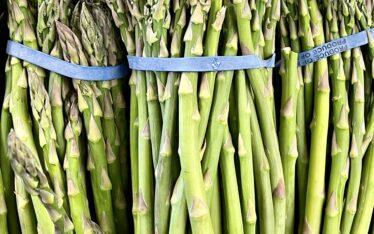 The first thing that many people drop from their schedule when they get busy is exercise. Working with clients I see this pattern again and again. Unless exercise is given a high priority it often falls by the way side during the holiday season. Yet body movement is one of the best stress busters there is! And with the recent economic downturn and extra holiday tasks there seems to be plenty of stress to go around. Exercise is also an extremely effective way to combat depression. Did you know that good science studies have repeatedly shown that exercising moderately sends more serotonin to your brain than a Prozac pill? Is a brisk walk better than a prescription antidepressant?
The first thing that many people drop from their schedule when they get busy is exercise. Working with clients I see this pattern again and again. Unless exercise is given a high priority it often falls by the way side during the holiday season. Yet body movement is one of the best stress busters there is! And with the recent economic downturn and extra holiday tasks there seems to be plenty of stress to go around. Exercise is also an extremely effective way to combat depression. Did you know that good science studies have repeatedly shown that exercising moderately sends more serotonin to your brain than a Prozac pill? Is a brisk walk better than a prescription antidepressant?
Many people in colder climates rely on indoor exercise routines to maintain fitness but getting outside for some of your exercise has additional benefits. It gets you into the sunlight or at least, the day light, which helps keep away the blues that some people experience during the shorter, darker days of winter. Exercise oxygenates the blood, promotes circulation, and helps your body metabolize the antioxidants that go in and cleanse the plaque from artery walls.
What about when it gets COLD? A few years ago we were in the Canadian Rockies when an “Alberta Clipper” rolled in, bringing with it temperatures of -32 degrees Fahrenheit! Deciding it was too cold to ski we took a short hike through the ice falls instead. It was so cold we had miniature snowballs on our eyelashes and when we closed our eyes they “glued” shut! It was one of the most invigorating and memorable experiences I’ve ever had.
Some of the longest lived peoples are those who cut holes in the ice and dive in, and mothers in Russia encourage their children to take off their boots and socks and run barefoot in the snow – yes, cold is good for you! Have you ever noticed how warm your body feels after a brisk walk in the cold? You may not be ready for the polar bear club just yet and please exercise caution and common sense regarding your own and your family’s safety, but enjoying active outdoor time doesn’t have to end when winter arrives.
Any kind of exercise is helpful and it’s best to find things you really enjoy. Look for opportunities for “bonus” activity like using stairs instead of elevators and walking to destinations where possible. Having a regular pattern of body movement and exercise is one of the most effective ways to create fundamental change in your health. From raking leaves and playing with your kids in the snow to walking, cycling, pilates, yoga and tai chi, movement as a part of daily life gets you out of your head space and away from the screens we spend so much time in front of these days. All the bio chemicals that feed your brain start metabolizing and rising to your brain when you exercise. This applies to children as well. In Finland, where they have the highest literacy rate in the world, children in grades 1 – 9 get to play outside (in all temperatures!) for 15 minutes after every 45 minute lesson. Do you think they understand more about brain physiology than we do? As Dr. Sharna Olfman, author of “Childhood Lost”, points out, “How much Ritalin might be spared if all school children in the United States had the freedom to “burn off steam” every 45 minutes?”1
Exercise reduces stress, mitigates the effect of holiday eating and is essential for a healthy body, mind and spirit. Whether you find it motivating to work out with friends or family members (including the furry kind) or to use body movement as part of a more meditative practice keep trying to bump exercise up to the top of your to do list!
Food Focus: Kasha
 Kasha is the name for roasted buckwheat groats. Groats are the hulled grains of various cereals such as oats, wheat, barley or buckwheat. Groats are often soaked and cooked. You may be familiar with wheat groats, also called bulgur, that are used to make tabbouleh.
Kasha is the name for roasted buckwheat groats. Groats are the hulled grains of various cereals such as oats, wheat, barley or buckwheat. Groats are often soaked and cooked. You may be familiar with wheat groats, also called bulgur, that are used to make tabbouleh.
Kasha is one of the oldest traditional foods of Russia and it is a wonderful winter grain. In Russia, the term kasha refers more generally to a “porridge” which can be composed of buckwheat, millet or oats. Surprisingly, buckwheat is not actually a member of the wheat family, but rather a relative of rhubarb, making it a gluten-free grain. Of all the grains, buckwheat has the longest transit time in the digestive tract, thus it is cleansing and strengthening to the intestines.
Kasha has a high proportion of all eight essential amino acids, especially lysine, and is beneficial to circulation due to the presence of a bioflavonoid called rutin. Kasha is rich in vitamin E, the vitamin B-complex vitamins, phosphorous, potassium, iron and calcium. And possibly best of all, it is very quick cooking!
Kasha should not be rinsed and must be added to boiling water or it will not cook properly. Using 2 parts water to 1 part kasha, cover and simmer Kasha for 17 minutes and voila! — you will have well-separated, round little grains to feast on.
Kasha is used as filling for kasha knishes and in the traditional Jewish dish, “kasha varnishkes”; see recipes below for my mother-in-law’s delicious version. Kasha is available in coarse, medium and fine grounds. The finely ground groats can be used as filler for soups and stews but they don’t offer the rich, nutty flavor of the course type sold in health food shops and natural foods markets.
Kasha is high in protein and fiber and makes a hardy breakfast. My daughter loves kasha as a hot cereal in the morning with a touch of real maple syrup and banana slices. It also makes a great grain pilaf when combined with veggies. I regularly add cooked kasha to meatloaves and meatballs instead of bread crumbs as in the Turkey Meatloaf recipe below.
This is the busy season and being able to cook a nutritious and tasty unrefined grain in 17 minutes is something we can be thankful for.
Recipes of the month
 Turkey Meatloaf
Turkey Meatloaf
(Adapted from the Ninecooks Family Cooking Group)
Ingredients:
1 onion, chopped
1/2 teaspoon sea salt
2 lbs ground dark meat turkey –Note: D’artagnan offers free-range, organic ground dark meat turkey – using ground white meat turkey is not ideal as it is too dry
2 scallions, chopped
2 tablespoon Colgin Liquid Smoke
1 tablespoon tomato paste
1 egg
1 cup cooked kasha
1 tablespoon Tamari
1 teaspoon Worcestershire sauce
1/2 cup dried cranberries soaked in water for 10 minutes
1/4 cup chopped cilantro or other greens of choice (I have also used chives & parsley)
Extra virgin olive oil
Directions:
Pre-heat oven to 400 degrees Fahrenheit
Lightly grease a 9 X 5 X 3 inch loaf pan with olive oil.
Heat a small amount of extra virgin olive oil in a skillet and sauté onions over low heat until softened and translucent (5 – 8 minutes).
In a large mixing bowl, combine the onion and all remaining ingredients. Mix until well combined and press into loaf pan. Bake for 55 minutes or until meatloaf reaches 165 degrees on a meat thermometer.
 Lee’s Kasha Varnishkes
Lee’s Kasha Varnishkes
Ingredients:
1 cup kasha
1 large onion
2 T. butter
1 egg
2 cups chicken stock
1 cup bow tie pasta
Directions:
Saute onion in butter or vegetable oil (if kosher).
Beat egg in small bowl. Pour in kasha and mix kasha and egg until well combined.
Dry roast kasha in cast iron skillet, stirring so the grains lightly toast and separate.
Pour chicken stock into a saucepan and heat.
When chicken stock comes to the boil add kasha and simmer, covered, for 8 minutes.
Add onions and salt and pepper to taste and continue to simmer kasha until cooked (about 8 more minutes).
Meanwhile, in a separate pot, cook bow tie pasta.
Add cooked bowties to cooked kasha and enjoy!
 Stuffed Acorn Squash
Stuffed Acorn Squash
I love winter squash and this is the time of year to indulge! Squash is a good source of complex carbohydrates and fiber and makes a great side dish instead of a cooked grain or a hearty main dish when combined with legumes or cooked grains. Try adding chunks of squash to lentil soup or drizzling maple syrup and a dash of cinnamon on chunks of cooked squash for a sweet treat.
I recently adapted this recipe from one I saw on Elana’s Pantry, www.elanaspantry.com, a great site for grain and gluten free recipes. I stuffed some beautiful acorn and sweet dumpling squashes that came in my share bag from farmer John Krueger of Starbrite Farm.
Ingredients:
2 acorn squash or other round squash
Unpasteurized apple cider at room temperature
3 apples. Peeled, cored and chopped
1/2 cup dried cranberries
1 1/2 t. cinnamon (for cinnamon freaks like us – less if you don’t love it!)
2 T. good quality butter, preferably grass fed, softened
2 T. maple syrup (optional)
Directions:
Pre-heat oven to 375 degrees Fahrenheit.
Scrub squash, slice in half and scrape out seeds.
Pour 1/4 inch of apple cider (can also use hot water) in bottom of roasting pan.
Place squash, open side down, in roasting pan and bake for 30 – 40 minutes depending on size of squash.
Assemble stuffing while squash is baking.
Remove squash from oven, turn over and mound stuffing in opening. Baste with apple cider.
Bake for an additional 30 to 45 minutes until squash flesh is fork tender.
1 Olfman, Sharna, “What about play?” Rethinking Schools Online, Vol 13, No. 3, spring 2005









Recent Comments